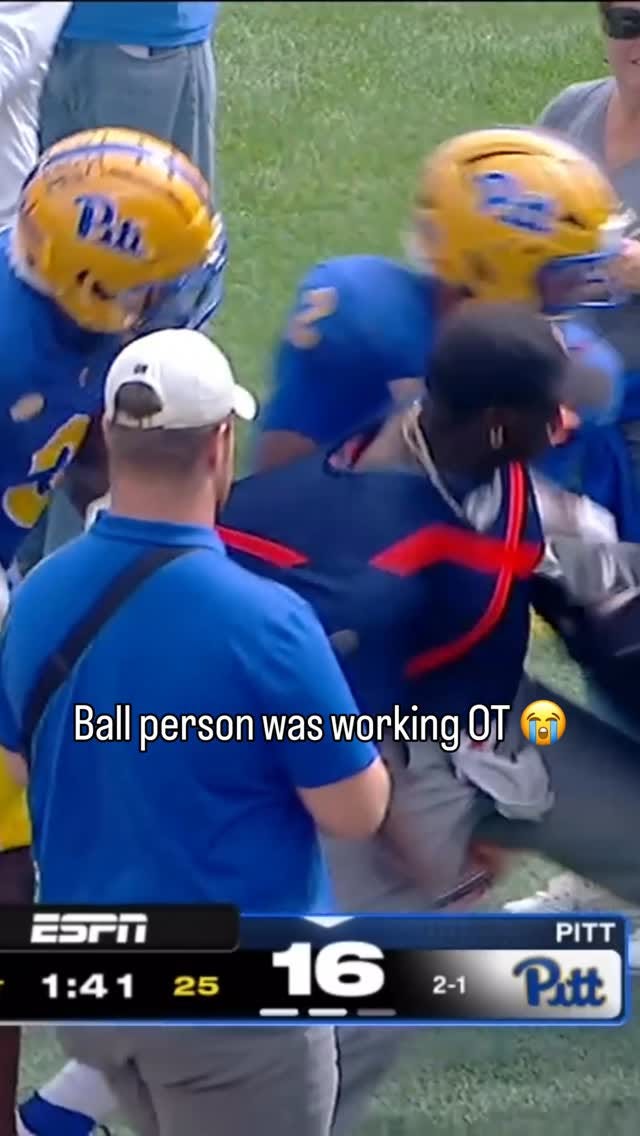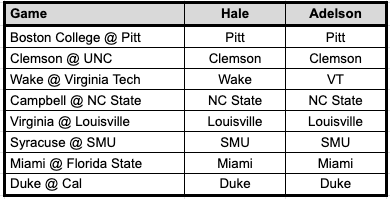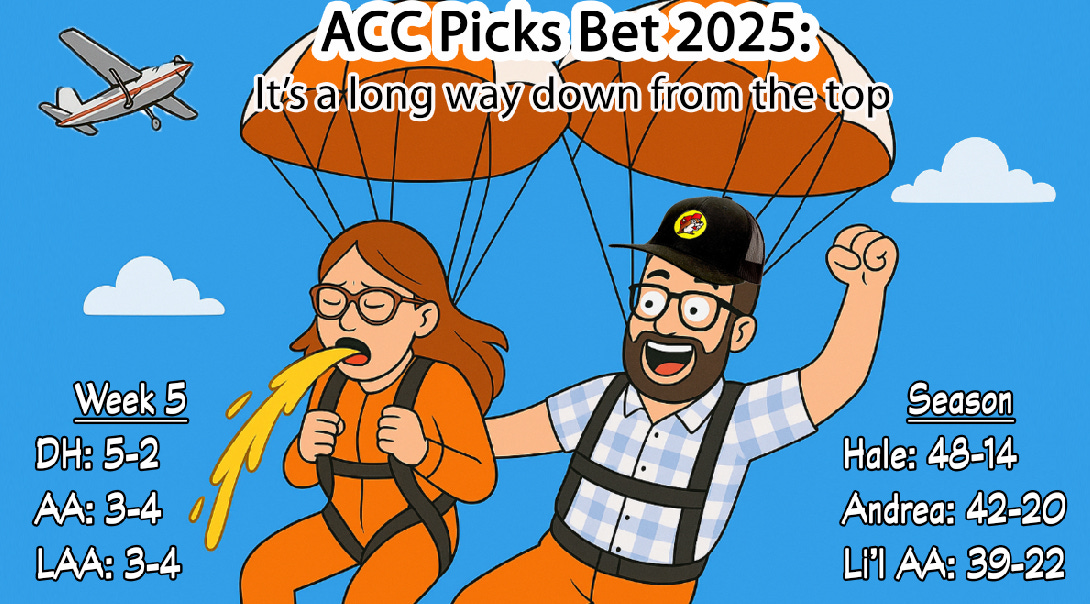Greed is good?
College sports went from an often lazily run small business to a shark tank in the span of a decade. The quest for ever more money paints a bleak picture.
“I’m a big fan of money. I like it, I use it, I have a little. I keep it in a jar on top of my refrigerator. I’d like to put more in that jar. That’s where you come in.”
-Adam Sandler in “The Wedding Singer”
This week, we got a lot of news about money in college sports, and if you’re like virtually every other fan I’ve spoken with, you just Do. Not. Care.
For us in the media, we drool over stories of the business side of college sports — where is it all headed, what’s next, who’s getting paid what. I get the strong sense that fans just want to see the games and would like a heads up if their team is realigning or dying a slow death.
The rest is essentially one long meeting with your accountant.
Anyway, there was school-related money news as Virginia Tech’s board of visitors approved a hefty new budget, and there was conference-related money news, as the Big Ten explores plans to partner with private equity on a deal that could see upwards of $2B in new capital.
It’s all quite confusing. I only know the smallest bit of what PE is all about, and how it works in the normal world — say, taking over a newspaper, gutting it, laying off everyone, selling the spare parts as society collapses around it — isn’t at all the same process that would unfold in college athletics, where public goods (like a university) and TV rights (owned by networks) aren’t for sale.
So, in bleak times like this, I turn to the single smartest person in the world when it comes to understanding the *why* of college business models, Matt Brown at Extra Points, who has a tremendous newsletter today on exactly what the Big Ten might be trying to do here. It’s worth a full read — or, better yet, please subscribe! It’ll make you so much smarter! — but here’s the part I want to focus on.
Think like another business. If you took out a loan from the bank for your hypothetical small business, you could use that to simply pay your existing labor force and maintain existing operations. But if you did that, and you didn’t grow, then eventually, you’d have to pay the bank back … and your business would still be exactly the same. Few banks would feel comfortable lending to somebody with that business plan.
You usually borrow money because you want to build something that will help you grow the business. Maybe that’s hiring more people so you can make more (or new) stuff. Build a new warehouse. Get new equipment to launch new services. Then, if it works out, your revenues go up, and you can pay back your investors.
If anybody, be it the Big Ten, an athletic department or any other entity in college athletics, wanted to raise outside money, I’d want to hear them explicitly explain what they want the money for.
It helps that Matt set up this conversation with a spot-on Simpsons reference to capture my attention, but it’s also a question I’ve been asking often, including of the Virginia Tech plan.
There are, in any situation like this, three big questions you should ask:
Where is the money coming from?
What will the money be spent on?
Is there a reasonable return on investment?
In the case of the Big Ten, the money is coming from PE, and there are tons of red flags there. On a seemingly unrelated note that actually might be pretty related, Derek Thompson has a terrific breakdown of the soon-to-pop AI bubble that could take down tons of other industries with it.1
In the case of Virginia Tech, it’s coming from university support and philanthropy, mostly.
In the rev share era, “university support” is something every school is tapping into, and that largely means higher student fees. This feels like dangerous territory to me — particularly in an era of declining enrollment so many places.
When it comes to philanthropy, this feels a) aspirational and b) concerning because those donors also fund talent acquisition in terms of NIL over and above the $20.5 million in revenue share. Which leads us to point No. 2.
What is this money being spent on? That’s the biggest question Matt asks in his piece, though he argues investing in player acquisition is a bad idea. He’s not wrong, but I’d argue the only thing that really matters in college athletics should be talent acquisition. If you can’t get good players, the rest is just window dressing. And if you’re capped on your direct spend at $20.5 million, and you’ve dried up your donor class in adding to the school’s budget — then what exactly are we doing here?
The amount to which budgets have inflated, revenue has skyrocketed, salaries for coaches and players have increased and schools are still crying poor constantly is confounding for me and so many others.
For example: If college tennis and swimming existed before massive TV deals for football, why do they need football revenue to survive in the future?
It gets at another fundamental issue I think we see lots of places2 which is a focus on how to pay for things rather than asking why those things cost so much.
Yes, schools like Virginia Tech have languished in passivity as the college sports world has advanced. But how, in the short term, is another $50 million going to change the Hokies’ fortunes if it cannot be spent on talent acquisition?
And as Brown asks: If the Big Ten is already by far the richest, most stable conference… what’s it need another $2B in immediate capital for?
Part of me wonders if the answer is: Because we can.
Matt’s Simpsons clip sets up his thesis: No one wants money for the sake of having money. They want it to buy things with.
But I’m not so sure that’s true. I think simply having more money, for a lot of folks in and out of college sports, is the whole point.
And if we accept that as a possibility, then question No. 3 about ROI is sort of a red herring. No one cares. Indeed, most of the people involved in making these decisions, the ones who’ll get to lay down on a pile of cash like Huell in “Breaking Bad,” likely aren’t going to have these jobs when the bills come due anyway.
Maybe this all works out. Maybe I’m just not smart enough to see the big picture. But boy, this sure seems like some muddy waters we’re wading into here, and I’m not sure what the point of doing it really is.
It’s FSU-Miami week
It’s time for Florida State-Miami, and the Noles’ Week 5 upset at Virginia aside, this looks like a particularly fun matchup.
Andrea Adelson has a good piece this week on Carson Beck, his unpleasant 2024 at Georgia, and his rebound at Miami this year. (Though I’m not sure how much of a “rebound” it really is, as I pointed out in an earlier newsletter.)
As for FSU, Mike Norvell joined is on Thursday’s Inside ACCess. I’d highly recommend subscribing (please!) to the podcast for the full interview, but I loved his answer on how, in the age of the portal, he makes sure everyone in his locker room understands the importance of this game.
There’s lots more discussion of Beck, Rueben Bain, Miami and the FSU-UVA outcome in Thursday’s show so please, consider subscribing and listening. You’ll be a better person for it. Or not. I mean, it’s not that great. But it’ll kill an hour of your day which isn’t nothing.
Also joining us on Inside ACCess this week was the country’s most bad-ass equipment manager, Louisville’s Zephian Wade.
You may have seen the clip of Zephian fighting with Pitt LB Rasheem Biles for a ball last Saturday.
My pal David Ubben3 wrote a nice piece on him for The Athletic, too.
And you know what? Zephian couldn’t have been nicer and more impressive when we had him on the show. The interview was super fun.
What’s David Writing?
Only one story from me this week: What the f*&$ is happening at Clemson?
My .02 is things aren’t really that bad, but that this team is definitely disjointed and a little soft, and Cade Klubnik is too in his own head. There’s a whole narrative out there about NIL ruining these guys’ focus, but I think the opposite may be true. The NIL — and the preseason hype — set expectations sky high, and now there’s so much pressure to live up to it when things have already gone wrong, that everyone is walking on eggshells or out to prove something and there’s no real sense of team. Still, I’ll be a bit surprised if they don’t blow the doors off UNC tomorrow.
I liked this from Mike Norvell though on what he learned from FSU’s 2-10 season that might be applicable to Dabo Swinney and Clemson now.
“The dynamic of college football and being a part of a team and the pressures that are within an organization now are greater than they’ve ever been,” Norvell said. “You put money into the equation and you have all the agents and people surrounding these kids, when things don’t go as expected, you’ve got to really stay true to who you are and make sure you’re connected with these guys at their needs. The example we had last year, we didn’t do a great job at that because as the tidal wave of challenges showed up, it’s critical to refocus and revamp the guys for what they can do. It’s not fun to go through, but I think you’ll continue to see more and more.”
Also, I talked with Bryant Wesco about Clemson’s struggles and Klubnik’s approach to turning things around.
What’s David Reading?
Few more good stories for you to peruse this weekend between football action…
Yahoo!’s Ross Dellenger has a good piece inside Florida State’s response to last year’s 2-10 campaign — all about doubling down (a method that doesn’t work as well for me at the blackjack tables)
Mike Lombardi isn’t making excuses about North Carolina’s performance so far but here’s a list of all his excuses that he sent to donors.
And now a bit of classic-ish rock nostalgia…
The naked baby from the cover of Nevermind has grown up into a real asshole. I hope the Bee Girl from Blind Melon’s video never dated him.
Popular Mechanics has a terrific deep dive (pun intended) on what really happened in the Wreck of the Edmund Fitzgerald.
My favorite music writer on one of my favorite bands: Steven Hyden goes deep on The Cars.
Also, if you’re a Cars fan, make sure you read this tremendous story from Griffin Dunne on an amazing prank Ric Ocasek played on him when the two were neighbors.
And FWIW, my top 5 favorite Cars songs…
Just What I Needed
You Might Think
Magic
Let’s Go
Moving In Stereo
And, with that, let us remember one of the greatest moments of the 1980s4 (the safe for work version, sadly)...
Week 6 ACC picks
I think Andrea and I are both in agreement we like Virginia overall better than Louisville right now, but coming off an emotional win and on the road, we’re not riding with the Hoos this week. Probably a mistake.
This is a terrific and important read, even if you’re not into speculating on the stock market or using Chat GPT.
Healthcare, in particular, but also housing and infrastructure and public transportation and college overall and… on and on and on. I’m always amazed at how much we want to yell at each other instead of the folks who are driving the prices.
Me, Ubben and Roddy Jones will be attending the Ludacris concert in Chapel Hill on Saturday at approximately 6:45 a.m.
My childhood perfect woman rankings: 1) Phoebe Cates 2) Elizabeth Shue (from Delaware!) 3) Debbie Gibson 4) Susanna Hoffs 5) My 5th grade social studies teacher Ms. Timms.






Help me out David -what's the Ghostbusters reference for, or is it there just as an example of money talk?